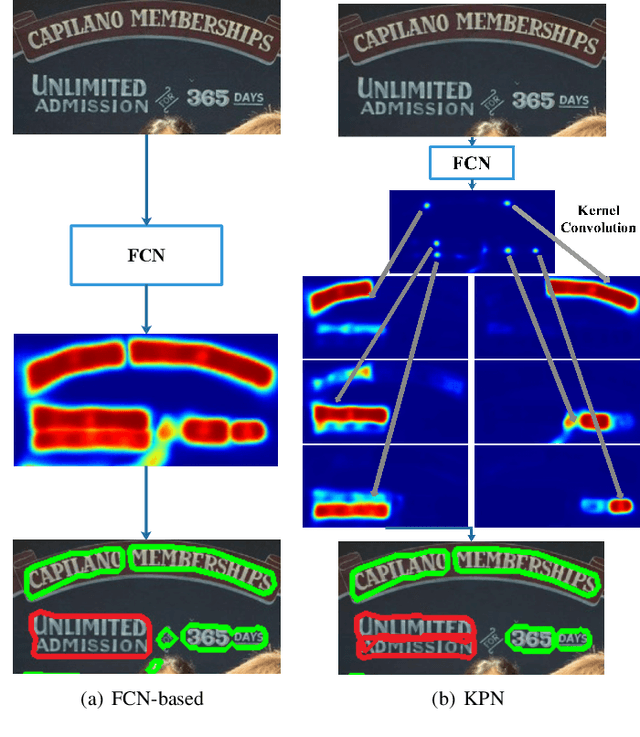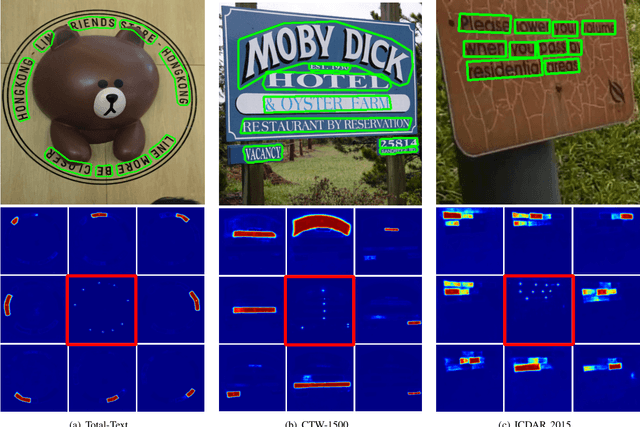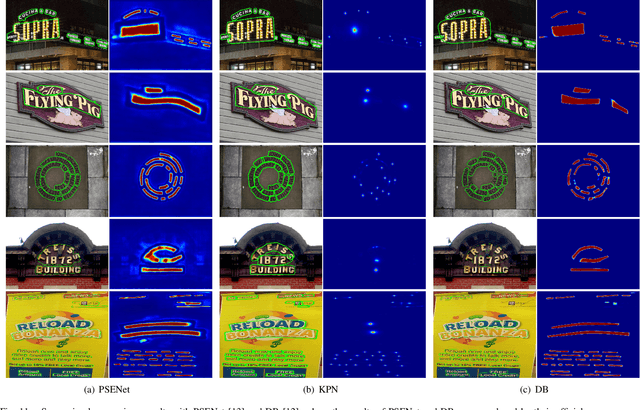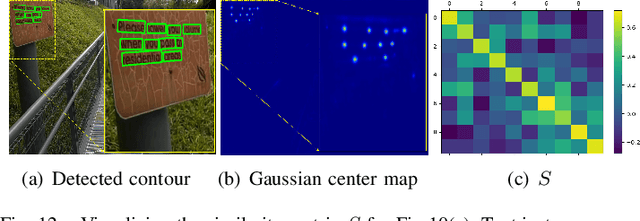Kernel Proposal Network for Arbitrary Shape Text Detection
Paper and Code
Mar 12, 2022



Segmentation-based methods have achieved great success for arbitrary shape text detection. However, separating neighboring text instances is still one of the most challenging problems due to the complexity of texts in scene images. In this paper, we propose an innovative Kernel Proposal Network (dubbed KPN) for arbitrary shape text detection. The proposed KPN can separate neighboring text instances by classifying different texts into instance-independent feature maps, meanwhile avoiding the complex aggregation process existing in segmentation-based arbitrary shape text detection methods. To be concrete, our KPN will predict a Gaussian center map for each text image, which will be used to extract a series of candidate kernel proposals (i.e., dynamic convolution kernel) from the embedding feature maps according to their corresponding keypoint positions. To enforce the independence between kernel proposals, we propose a novel orthogonal learning loss (OLL) via orthogonal constraints. Specifically, our kernel proposals contain important self-information learned by network and location information by position embedding. Finally, kernel proposals will individually convolve all embedding feature maps for generating individual embedded maps of text instances. In this way, our KPN can effectively separate neighboring text instances and improve the robustness against unclear boundaries. To our knowledge, our work is the first to introduce the dynamic convolution kernel strategy to efficiently and effectively tackle the adhesion problem of neighboring text instances in text detection. Experimental results on challenging datasets verify the impressive performance and efficiency of our method. The code and model are available at https://github.com/GXYM/KPN.
 Add to Chrome
Add to Chrome Add to Firefox
Add to Firefox Add to Edge
Add to Edge